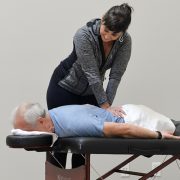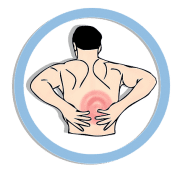Back Surgery: Why it fails and do you need it
Approximately 500,000 Americans undergo back surgery to relieve their pain every year, and according to the Agency for Healthcare Research and Quality (AHTQ), this costs approximately $11 billion annually.
But what if I told you that only 5% of people undergoing back surgery actually need it – and worse – for many folks the pain ends up coming back. The American Society of Anesthesiologists estimates that 20-40% of back surgeries fail. If you’ve had repeated back surgery your risk of failure increases. Failed back surgery is so common that it’s gotten its own name – “Failed Back Surgery Syndrome” – which occurs when you experience continued pain in your neck, back, or limbs following any spine surgery meant to reduce pain.
So why then do we continue spending so much money on back surgery when the majority of people don’t actually need it – and when half the surgeries fail?
Back pain can be excruciating, debilitating, and have a significant impact on your quality of life and happiness.
If you’re in this situation, and told by a well-respected surgeon that surgery is your best option of taking your pain away and getting you back to living your life again, odds are good you will take that opportunity. And most of the time – surgery does take your pain away – initially that is.
But what surgeons don’t tell you is that your pain has a high likelihood of returning.
If you’ve had one “successful surgery” – you assume the next will go the same. But as mentioned above – the more back surgeries you have – the more likely they are to fail – and the vicious cycle begins.
So when should you get back surgery?
If you’ve had an accident or trauma that has resulted in major damage to your spine – you need surgery.
If you have urgent compromise to one of your spinal nerves you also need surgery. But let me preface “urgent”.
Your symptoms will be progressive and severe.
Signs might include problems with your bowel and bladder, sudden and worsening foot drop (loss of strength and ability to lift your foot and toes), walking will be difficult and progressively worsen, and nothing will take your pain away – medication and rest will barely touch your symptoms.
These cases are rare – but do require surgery to quickly decompress your nerve before permanent damage ensues.
But 70-80% of the time, back pain is what we call non-specific or mechanical.
And surgery is not recommended – and rarely works for this type or back pain.
Mechanical back pain can be acute and last for a few days, or can be chronic and come and go. You might have nerve pain with numbness and shooting pain down your leg, but it won’t be urgent like the situation described previously. The pain you feel is typically caused by irritation to soft tissue structures, discs, muscles, and joints. But the root cause of this irritation is from something different – and that is what we need to care about.
It’s why 50% of back surgeries fail.
Let me explain…
When you get an MRI to see “what’s causing” your back pain – it will typically show some form of bulging disc, degenerative discs, or lumbar stenosis. You will likely be told that these findings are what’s causing compression and irritation to your nerves.
They might try injections and medication first, but when that doesn’t work, they’ll recommend surgery. But here’s the catch. These findings show up in 60-80% of all MRI’s when you’re over the age of 50. But not everyone with these “abnormalities” has back pain.
In other words, you can have two people of the same age, with equal-looking MRI’s, and one will have pain while the other doesn’t.
How does that happen?
What research has shown over the years is that what shows up in your images rarely correlates with what’s causing your back pain.It’s why so many back surgeries fail – because we are messing with “abnormal” findings that are in fact – quite normal for your age. So if the structures aren’t the problem – then what is?
Most back pain comes from poor movement habits and lifestyle.
Over time, repeated, unbalanced movements will exacerbate or cause irritation to these structures that are considered “findings”. But you can’t fix your back problem by only addressing where the symptoms are.
You have to address the root cause. This is typically some combination of restoring full and free mobility in your spinal joints and balancing out flexibility and strength. When you move correctly – these structures are no longer bothered – and neither is your back.
I know what you’re thinking – this sounds way too simple and perhaps you’ve already tried physical therapy or something similar and it didn’t work. Sadly, not everyone understands – or even agrees – with the concept of mechanical back pain in the way I’ve just explained it.
But trust me, when you find someone who does, you’ll be amazed at how easy it is to fix your own back. You can then keep the pain gone – without ever having to see the inside an operating room.
Back surgery can be costly – both to your bank account and mental well being.
That’s a lot of money to risk when there’s only a 50% chance of the surgery working. There’s an even better chance that your pain will come back. If there’s a complication of any kind, then you’re looking at more surgeries. This is an almost certain loss in quality of life.
It’s worth it to do your due diligence. Find a movement specialist who understands mechanical back pain and can keep you out of the operating room.
If you’re dealing with back pain now and want to learn more…
We will be talking all about this and more in our upcoming Masterclass for Back Pain & Sciatica Sufferers.
The Masterclass is free – and happening on January 24th from 6-7 pm via zoom. Reserve your seat HERE – spaces are limited – and there’s a limited number of spots left.










